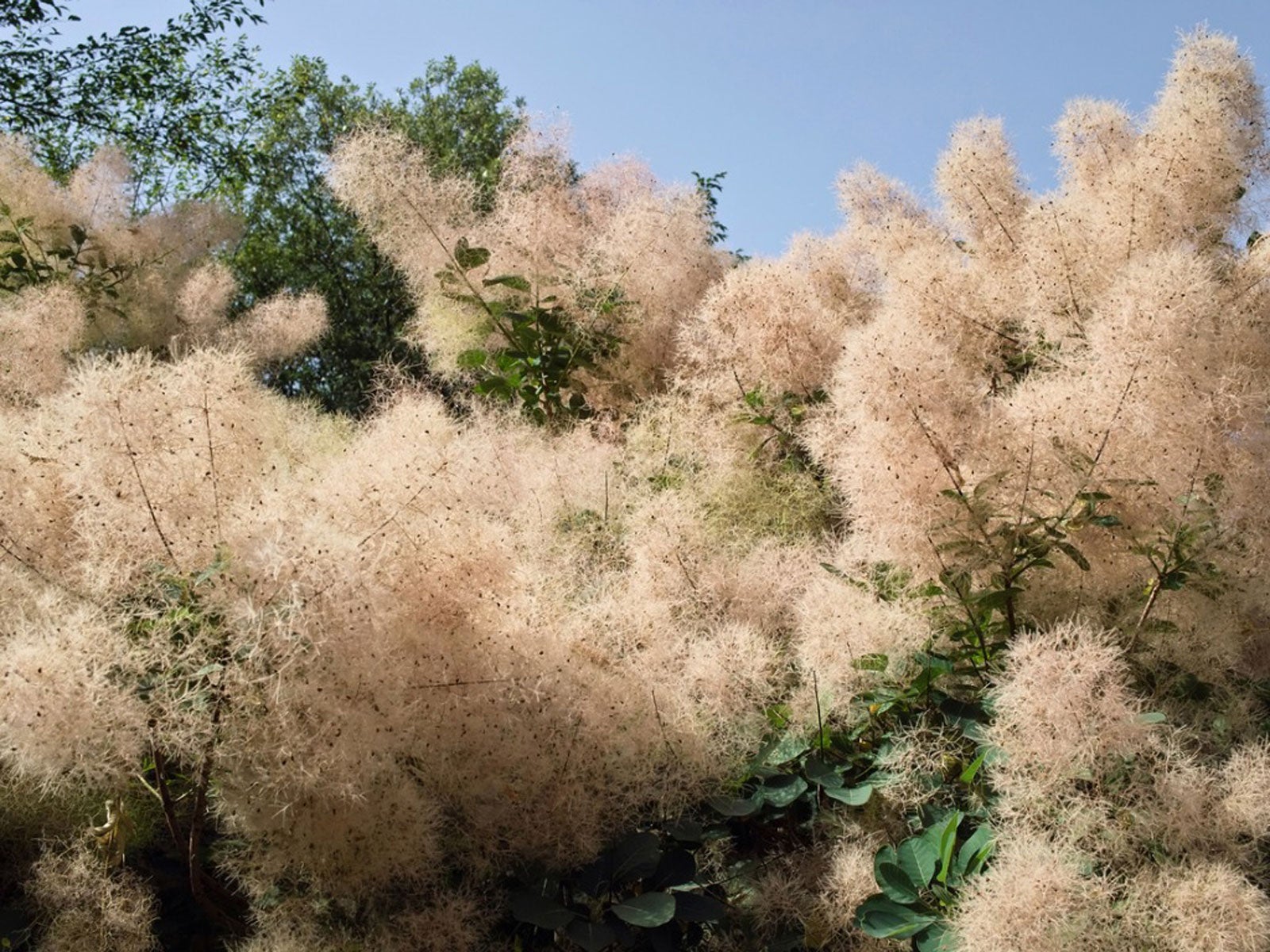Smoke trees, also known as smoke bushes, are prized ornamental shrubs or small trees grown for their airy plumes of flowers and colorful foliage. They have an open, spreading growth habit that can get leggy and overgrown without proper pruning. Pruning smoke trees not only maintains their form but also promotes vigorous growth and maximum flower production.
When to Prune Smoke Trees
The best time for pruning smoke trees is early spring, before the plant leafs out. Pruning in early spring avoids cutting off developing flower buds yet still allows adequate time for new growth to harden off before winter. Late winter is another option but early spring is ideal. Avoid pruning smoke trees in summer or fall when the plant is focused on root growth and preparing for dormancy.
Pruning Newly Planted Smoke Trees
It’s best not to do any major pruning the first year after planting a new smoke tree Allow it time to establish a healthy root system before pruning Lightly trim any damaged branches and shape the canopy lightly if needed.
The second year, in early spring, you can begin structural pruning to shape young smoke trees Identify 3-5 main scaffold branches spaced evenly around the trunk to form the basic framework. Remove competing lateral shoots and any branches that rub or cross to improve structure.
Annual Pruning of Established Smoke Trees
On established smoke trees the annual pruning regimen includes
- Removal of dead, diseased, or broken branches
- Thinning congested areas to improve air circulation
- Removing crossing, rubbing branches and inward-facing branches
- Cutting back to just above strong buds to encourage branching
- Removing suckers and water sprouts
- Lightly trimming branch tips to shape as needed
Rejuvenation Pruning Overgrown Smoke Trees
Old, overgrown smoke trees can be rejuvenated by cutting them back to 6-12 inches above ground level in early spring. This stimulates the development of fresh new shoots. Flowering will be reduced for a year or two as the plant regenerates but it recovers quickly. Alternatively, you can renew smoke trees over 3 years by cutting back 1/3 of the oldest branches each spring.
Pruning Smoke Tree Standards
For smoke trees trained as standards, prune to maintain a dominant central leader and well-spaced side branches. Remove any secondary trunks and branches that compete with the leader. Head back long side branches and remove inward facing branches.
Pruning Tools and Techniques
Use sharp, sterile bypass pruners and loppers when pruning smoke trees. Make clean cuts just outside the branch collar, angling the cut to avoid leaving stubs. Avoid injuring the branch bark ridge when removing large branches. Disinfect tools before pruning each plant.
Follow proper pruning techniques: never remove more than 1/3 of the overall canopy when pruning smoke trees. Space cuts evenly and avoid chopping branches midway along their length. Always prune just above strong buds or branches.
Aftercare for Pruned Smoke Trees
Applying a balanced fertilizer and mulching after pruning helps smoke trees recover quickly. Keep the root zone moist but not saturated. Stake branches of heavily pruned specimens if needed. Observe for signs of disease or pests and take prompt action if any appear.
Proper pruning is vital for smoke trees to grow beautifully. By pruning at the right times and using the proper techniques, you can maintain smoke trees at a desired size, rejuvenate overgrown specimens, and coax the bountiful blooms that make them so prized. With a basic understanding of their pruning needs, you can readily incorporate smoke trees as focal points or accent plants in your garden.
Why You Should Prune Smokebush and How to Prune It
FAQ
Is there a difference between a smoke bush and a smoke tree?
Why doesn’t my smoke bush bloom?
How long does a smoke tree last?
When should you prune a smoke tree?
Pruning smoke trees annually will help make the plant more compact and strengthen the limbs. Trimming smoke trees can be done in late winter or very early spring. As a general rule, pruning smoke trees for shape is done in very early spring when the plant is still mostly dormant and the process will create less stress.
How do you prune a smoke bush?
Sharp tools are essential when pruning a smoke bush The first step is to remove any dead, damaged, or diseased wood, and prune branches back to healthy tissue or completely to the base. The removal of unwanted and crossing branches will also help thin the canopy and improve air circulation and sunlight penetration into the shrub.
How to trim a smoke tree?
The method used when trimming smoke trees depends upon whether you want a tree or bush. For a tree, you need to start young and remove all the extra stems, leaving only one strong central leader. You can shape it at this point and keep the plant below a certain height.
How do you care for a smoke tree after pruning?
Once you’ve finished pruning, give your smoke tree some post-pruning TLC: Watering: Ensure your smoke tree receives adequate water, especially during dry spells, to help it recover from pruning stress. Mulching: Apply a layer of mulch around the base of the tree to retain moisture and suppress weeds.
- A Complete Guide to Caring for Yuki Cherry Blossom Shrub - January 23, 2025
- Identifying Red Hot Poker Seeds: What to Look For When Harvesting Torch Lily Pods - January 23, 2025
- A Complete Guide to Harvesting Evening Primrose Seeds - January 23, 2025

